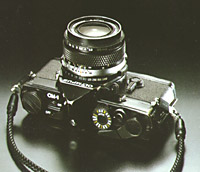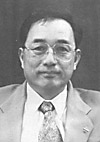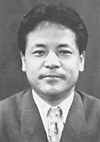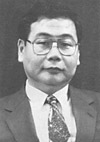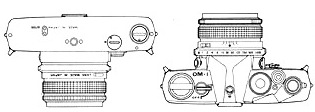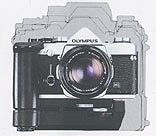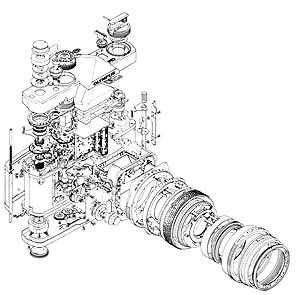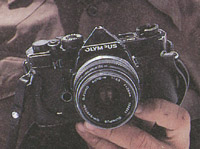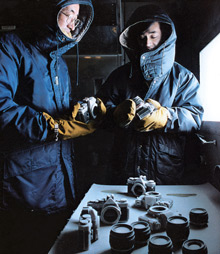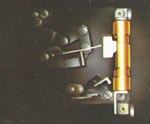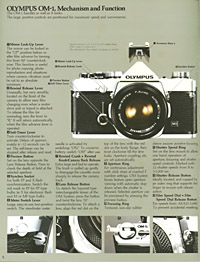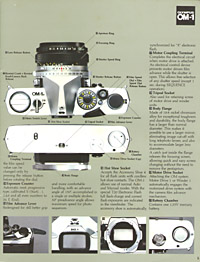|
 
I:
By the way, Mr.Kawazoe entered Olympus at the time of OM-1 development?
K:
When I entered Olympus, the name was still M-1. It was being developed.
I:
Olympus had a big SLR named FTL before OM-1.
K:
It was only a stopgap for international market. Our Sales Department
claimed.
I:
Olympus carried the compactly designed cameras from the Pen to the OM
SLR.
S:
Absolutely! Compactness is beautiful.
I:
However, the Olympus Six and the Olympus Flex were big.
S:
Hmm. There was no way to make the Olympus Six smaller. (laughs)
M:
Perhaps, Mr. Sakuraiís idea of compactness is based on his experiences
as a practical photographer. Also, I might be a photographer if I didn't
enter Olympus. As for a photographer, compactness is an advantage.
I:
Mr.Kawazoe, did you find something new in the development of OM-1?
K:
After I finished a six-month in-house training, Mr. Maitani asked me
"Why don't you participate in the SLR project?" And he showed me an
experimental brass top cover. I thought it was really small and the
concept represented Olympusí individual characteristics. And I thought
it would be the Olympusí first SLR. At that time, I didnít know our
first SLR was the FTL. (laughs)
However
I was pressed after I knew the inside mechanism was really complex (laughs),
I was deeply impressed.
I:
At that time, some cameras had electronic devices?
K:
At that time, some other manufacturersí SLRs had automatic exposure
function. But we didnít develop electronic devices for the M-1. We started
to develop electronic devices for SLRs after the M-1, for example auto
exposure, flash synchronization...
I:
What part did you concern with?
K:
Mainly, I designed the viewfinder part. The focusing screen and its
interchangeable system, and so on.
I:
At first, you started to design from the lens mount part. Did you have
any troubles?
K:
I was troubled with the interchangeable focusing screen mechanism. Spring
was practical to fix the frame that caught the focusing screen. But
the mirror box was really small and tight. There was no space to swing
the frame. A spring clasp was a little big to put into the mirror box.
Finally, after repeating trial and error, I developed the resistive
metal composition for the clasp to make the most of small space.
I:
The screen is provided with a tweezers.
K:
We attached the tweezers on the assumption that to take out the focusing
screen without getting finger-marks on it, but everybody used their
fingers.
I:
Many types of focusing screens were provided. You had the plan from
the early stage of development to link with other part of the system?
For example microscope, astronomical telescope.
K:
Before I participated in the project, the M-System already had the idea.
S:
The expansion of M-System was one of Maitaniís remarkable achievements
during his career in Olympus. He developed the magnificent camera system
all at once.
I:
Ditto. Mr. Maitani showed me a lens and asked me to guess its focal
distance. I couldnít make it sure but it seemed to be a 50mm lens. I
answered "50mm?" He proudly answered "No. This is 100mm".
It was an unforgettable conversation.
S:
We presented the system "From the Cosmos to Bacteria" from
an optical companyÖ
M:
We tried to miniaturize anything we can with all the power and know-how
because we are comprehensively developing any kinds of optical instruments.
|
